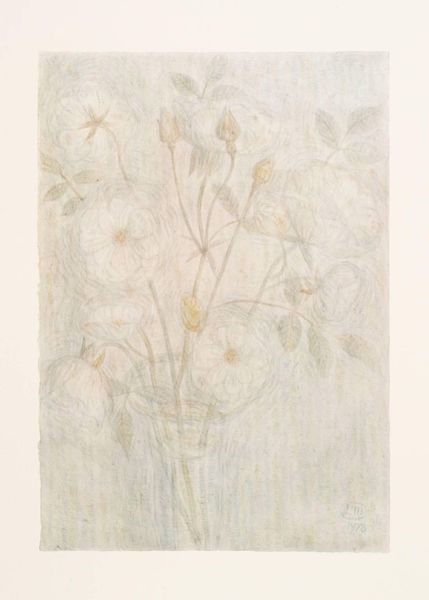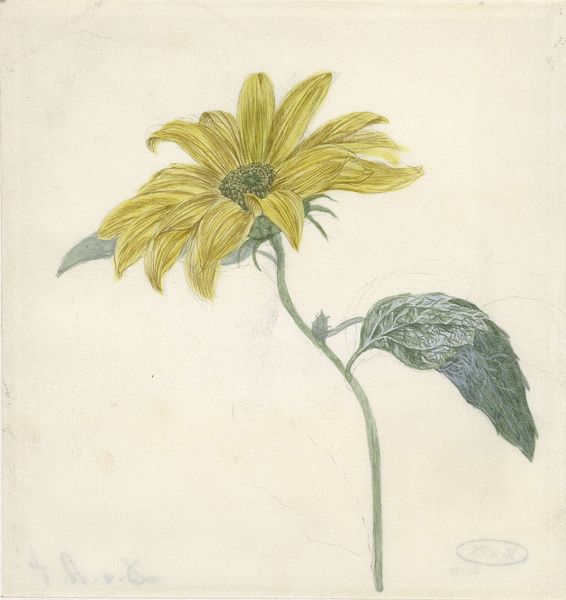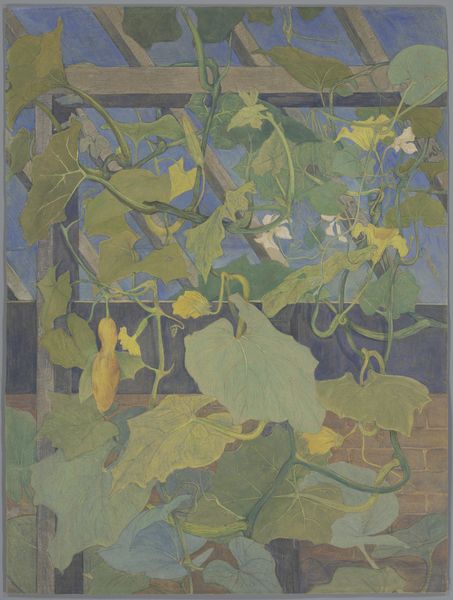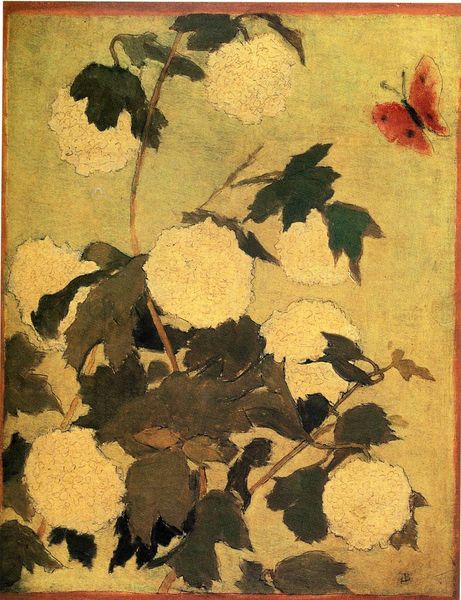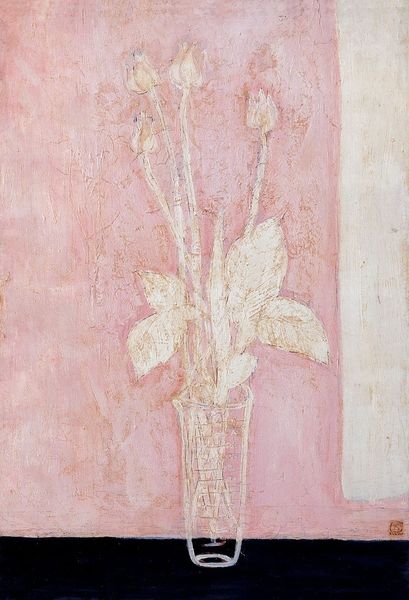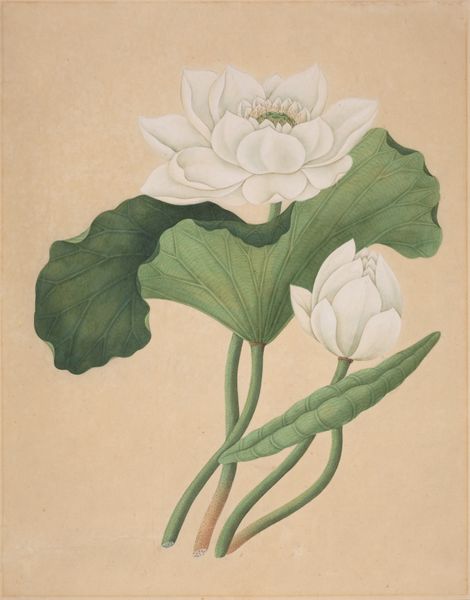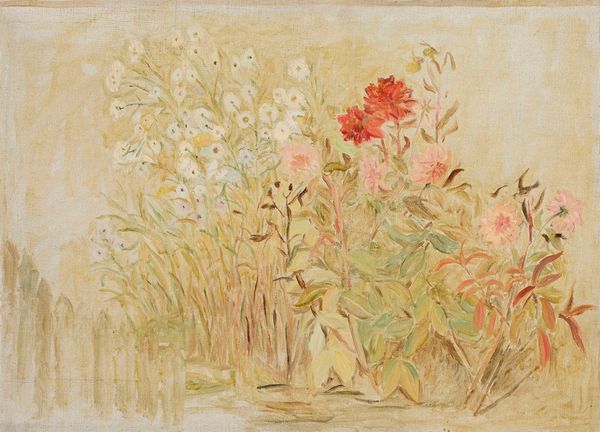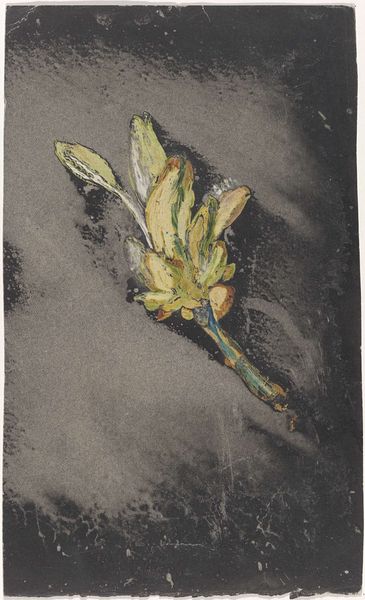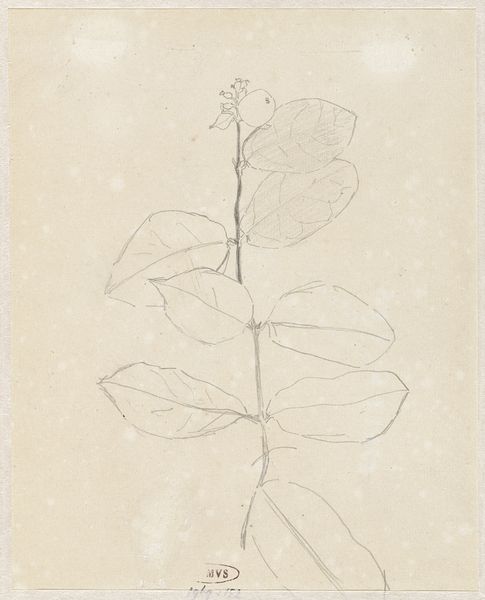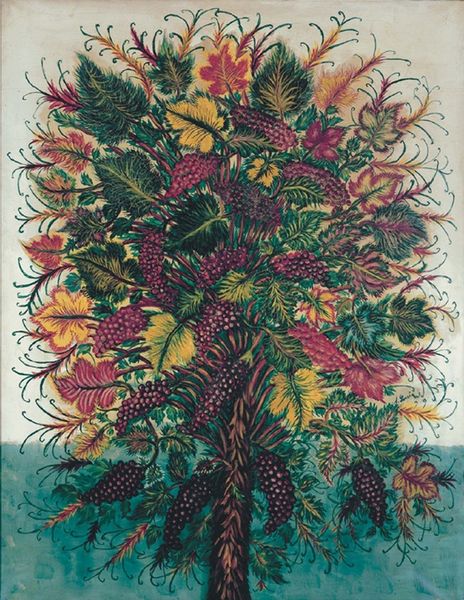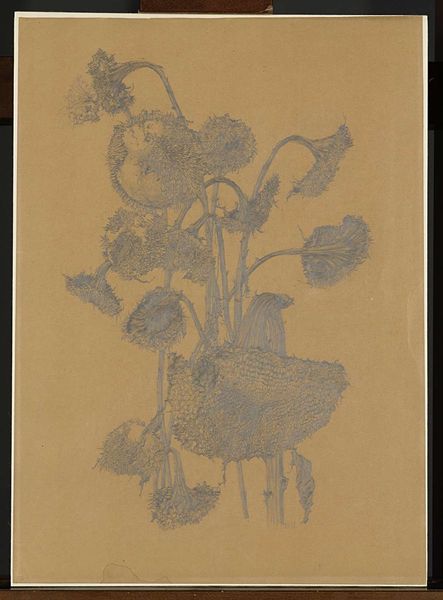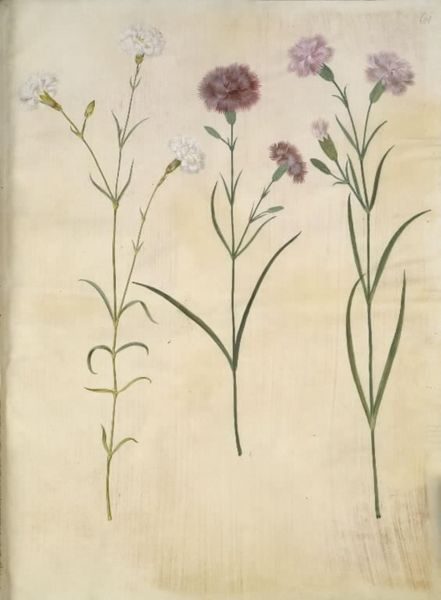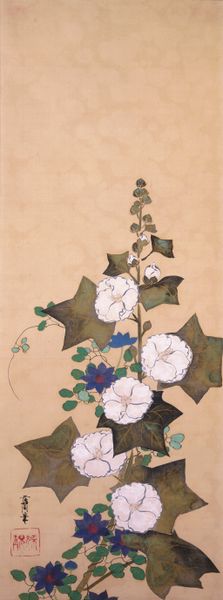
Copyright: Public Domain: Artvee
Editor: Here we have Piet Mondrian's "Chrysanthemum," dating from between 1906 and 1942. It seems to be an oil painting, and the impasto is quite pronounced. It feels both delicate and substantial to me. What do you see in this piece from a formalist perspective? Curator: I observe a study in contrasts. Note the texture: thick impasto versus thin washes, opaque petals playing against the translucent background. The composition teeters between representation and abstraction. Consider also the colour relationships. Editor: The colour palette is quite muted, isn’t it? It’s not the vibrant impressionism I typically associate with floral paintings. Curator: Precisely. While adhering to Post-Impressionist tenets, the muted palette, coupled with a clear structure underlying the portrayal of the bloom, presages Mondrian’s later, more abstract works. Is there an overriding structure within those seemingly organic shapes? How do these compositional decisions evoke emotional and intellectual response? Editor: That's interesting. It does have an underlying structure. Now I notice how Mondrian organizes form and colour in a restricted fashion, focusing not on the emotion of the artwork, but more on geometric planes and colour in the artwork, anticipating his future abstract periods. Curator: Yes, we discern the move toward abstraction from careful, near obsessive observation. So this work resides somewhere between representation and something entirely non-objective. That transition is key. Editor: So looking closely, one sees a whole career of visual exploration encapsulated within a seemingly simple floral portrait. Thank you for elucidating the compositional contrasts. Curator: A focused inquiry into visual elements illuminates an artist's journey toward a new visual language.
Comments
No comments
Be the first to comment and join the conversation on the ultimate creative platform.
